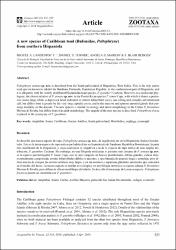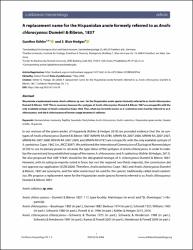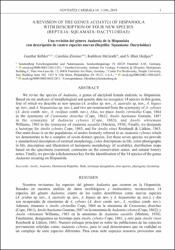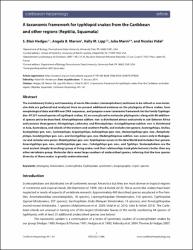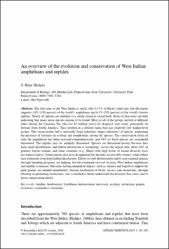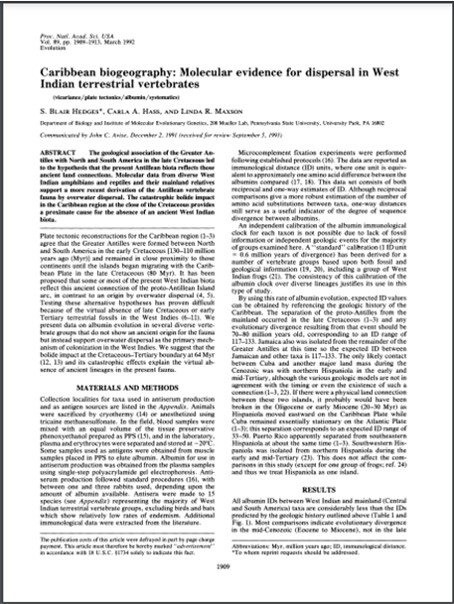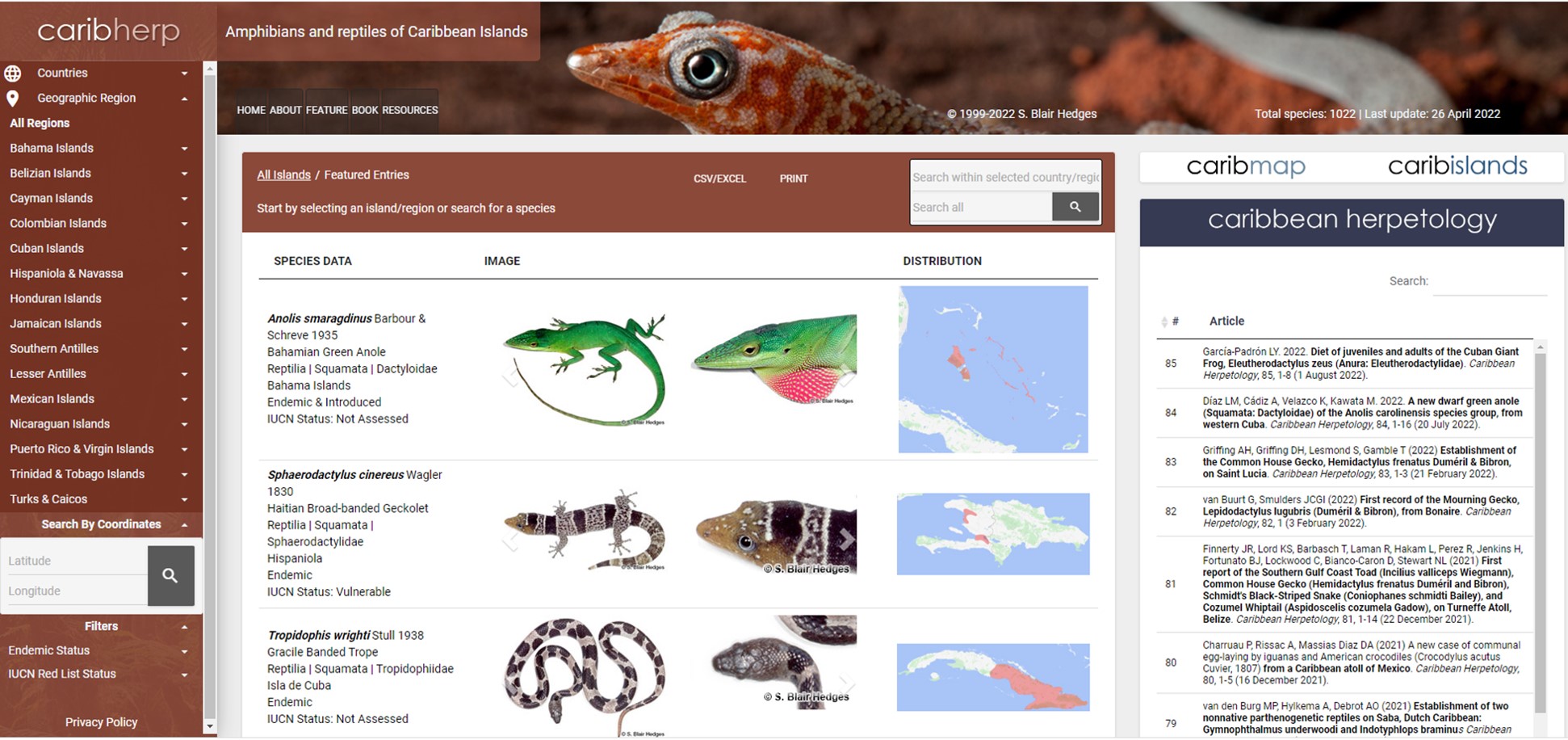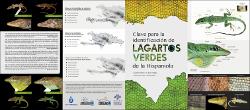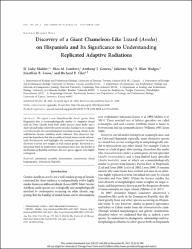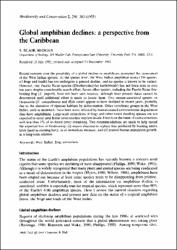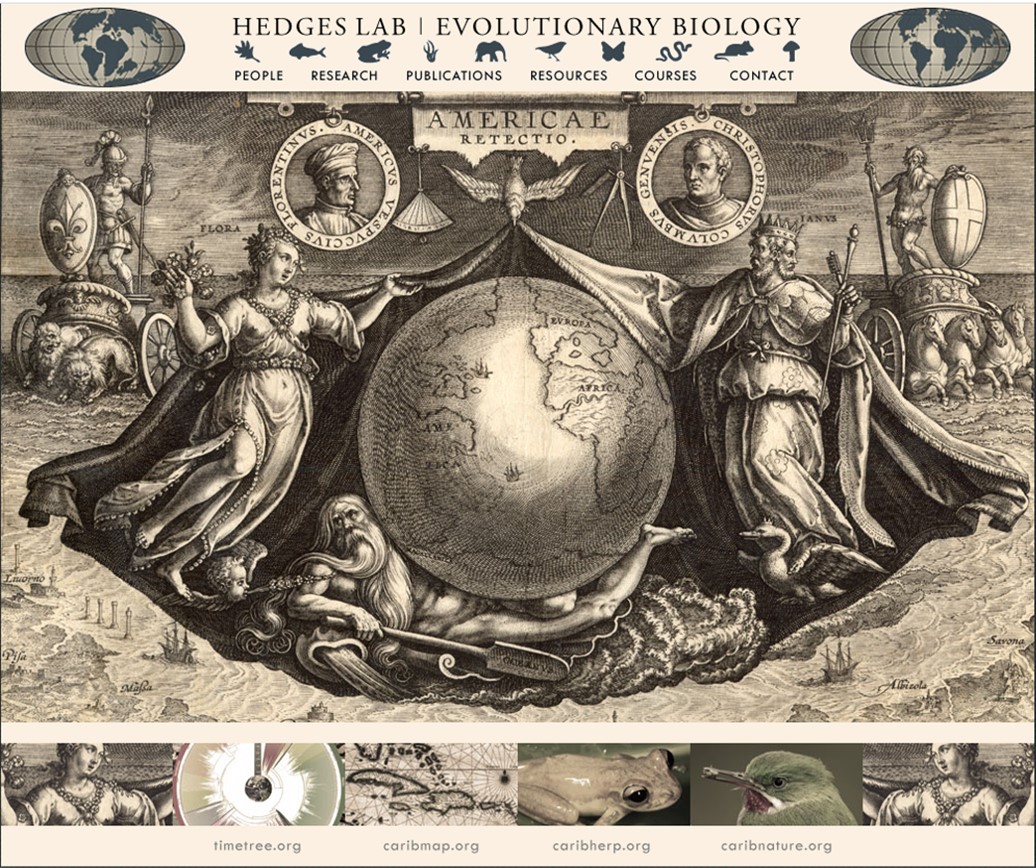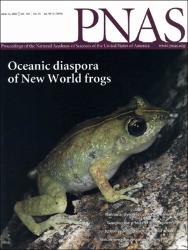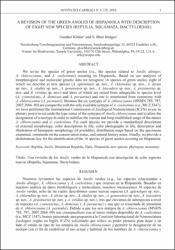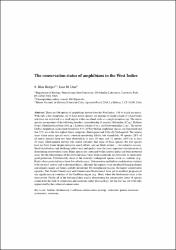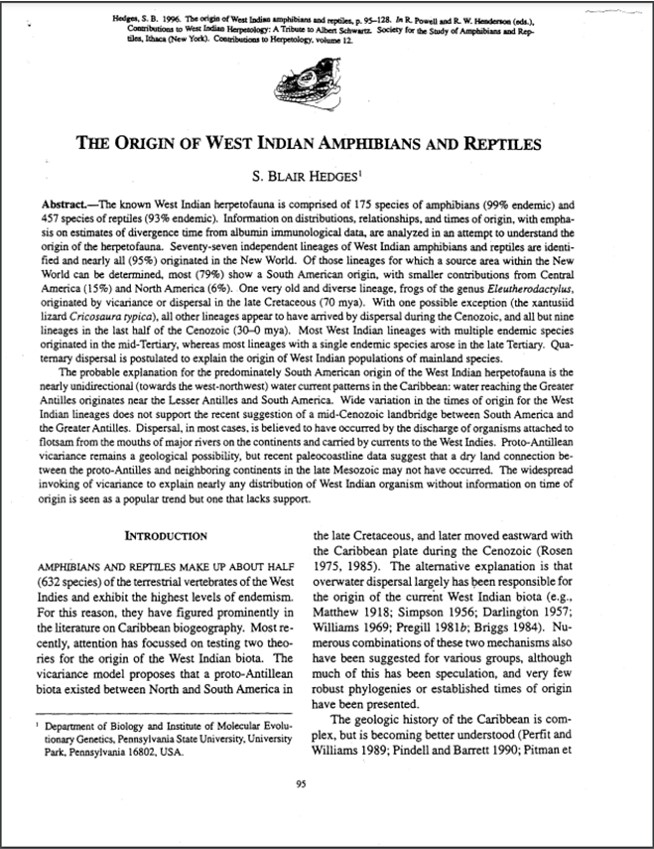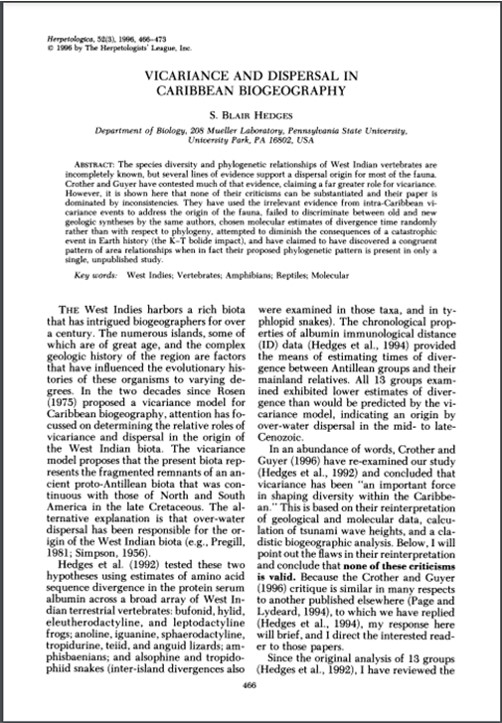Listar por autor "Hedges, S. Blair"
Mostrando ítems 1-17 de 17
-
A new species of Caribbean toad (Bufonidae, Peltophryne) from southern Hispaniola
Landestoy T., Miguel A.; Turner, Daniel B.; Marion, Angela B.; Hedges, S. Blair (2018)Peltophryne armata sp. nov. is described from the South paleoisland of Hispaniola, West Indies. This is the only native toad species known to inhabit the Barahona Peninsula, Dominican Republic, in the southernmost part of ... -
A replacement name for the Hispaniolan anole formerly referred to as Anolis chlorocyanus Duméril & Bibron, 1837
Köhler, Gunther; Hedges, S. Blair (2020)We provide a replacement name, Anolis callainus sp. nov., for the Hispaniolan anole species formerly referred to as Anolis chlorocyanus Duméril & Bibron, 1837. This is necessary because the syntypes of Anolis chlorocyanus ... -
A revision of the genus Audantia of Hispaniola with description of four new species (Reptilia: Squamata: Dactyloidae)
Köhler, Gunther; Zimmer, Caroline; McGrath, Kathleen; Hedges, S. Blair (2019)[English] We revise the species of Audantia, a genus of dactyloid lizards endemic to Hispaniola. Based on our analyses of morphological and genetic data we recognize 14 species in this genus, four of which we describe as ... -
A taxonomic framework for typhlopid snakes from the Caribbean and other regions (Reptilia, Squamata)
Hedges, S. Blair; Marion, Angela B.; Lipp, Kelly M.; Marin, Julie; Vidal, Nicolas (2014)The evolutionary history and taxonomy of worm-like snakes (scolecophidians) continues to be refined as new molecular data are gathered and analyzed. Here we present additional evidence on the phylogeny of these snakes, ... -
An overview of the evolution and conservation of West Indian amphibians and reptiles
Hedges, S. Blair (2006)The total area of the West Indies is small, only 0.15% of Earth’s land area, but the region supports 3.0% (180 species) of the world’s amphibians and 6.3% (520 species) of the world’s known reptiles. Nearly all species are ... -
Caribbean biogeography : molecular evidence for dispersal in West Indian terrestrial vertebrates
Hedges, S. Blair; Hass, Carla A.; Maxson, Linda R. (1992)The geological association of the Greater Antilles with North and South America in the late Cretaceous led to the hypothesis that the present Antillean biota reflects those ancient land connections. Molecular data from ... -
Caribherp : amphibians and reptiles of Caribbean Islands
Hedges, S. Blair (1999)Caribherp is an online database containing information on amphibians and reptiles of the Caribbean Islands. It was established in 1999 and serves as a resource for determining the species that occur on specific islands, ... -
Clave para la identificación de lagartos verdes de la Hispaniola
Köhler, Gunther; Hedges, S. Blair; Incháustegui, Sixto J. (trad.) (2018)Este interesante brochure es un instructivo con las claves generales para identificar los lagartos verdes de la isla Hispaniola. Su contenido es una selección extraída del artículo “A revision of the green anoles of ... -
Definition of the Caribbean Islands biogeographic region, with checklist and recommendations for standardized common names of amphibians and reptiles
Hedges, S. Blair; Powell, Robert; Henderson, Robert W.; Hanson, Sarah; Murphy, John C. (2019)To facilitate biological study we define “Caribbean Islands” as a biogeographic region that includes the Antilles, the Bahamas, and islands bordering Central and South America separated from mainland areas by at least 20 ... -
Discovery of a giant chameleon-like lizard (Anolis) on Hispaniola and its significance to understanding replicated adaptive radiations
Mahler, D. Luke; Lambert, Shea M.; Geneva, Anthony J.; Ng, Julienne; Hedges, S. Blair; Losos, Jonathan B.; Glor, Richard E. (2016)We report a new chameleon-like Anolis species from Hispaniola that is ecomorphologically similar to congeners found only on Cuba. Lizards from both clades possess short limbs and a short tail and utilize relatively narrow ... -
Global amphibian declines : a perspective from the Caribbean
Hedges, S. Blair (1993)Recent concern over the possibility of a global decline in amphibians prompted this assessment of the West Indian species. At the species level, the West Indian amphibian fauna (156 species, all frogs and toads) has not ... -
Hedges Lab : Evolutionary Biology
Hedges, S. Blair (2016)Este portal web, desarrollado por el científico norteamericano Stephen Blair Hedges, Ph.D. (Carnell Professor and Director, Center for Biodiversity, Science Education & Research Center, Temple University, Philadelphia), ... -
Major Caribbean and Central American frog faunas originated by ancient oceanic dispersal
Heinicke, Matthew P.; Duellman, William E.; Hedges, S. Blair (2007)Approximately one-half of all species of amphibians occur in the New World tropics, which includes South America, Middle America, and the West Indies. Of those, 27% (801 species) belong to a large assemblage, the ... -
A revision of the green Anoles of Hispaniola with description of eight new species (Reptilia, Squamata, Dactyloidae)
Köhler, Gunther; Hedges, S. Blair (2016)[English] We revise the species of green anoles (i.e., the species related to Anolis aliniger, A. chlorocyanus, and A. coelestinus) occuring on Hispaniola. -
The conservation status of amphibians in the West Indies
Hedges, S. Blair; Díaz, Luis M. (2011)There are 196 species of amphibians known from the West Indies, 188 of which are native. With only a few exceptions, all of those native species are endemic to single islands or island banks, and most are restricted to a ... -
The origin of West Indian amphibians and reptiles
Hedges, S. Blair (1996)The known West Indian herpetofauna is comprised of 175 species of amphibians (99% endemic) and 457 species of reptiles (93% endemic). Informaation on distributions, relationships, and times of origin, with emphasis on ... -
Vicariance and dispersal in Caribbean biogeography
Hedges, S. Blair (1996)The species diversity and phylogenetic relationships of West Indian vertebrates are incompletely known, but several lines of evidence support a dispersal origin for most of the fauna. Crother and Guyer have contested much ...

